|
by Elisabeth Hauser, Harborview Elementary, Kindergarten Introducing kindergartners to sea week may be one of the best reasons to be a kindergarten teacher. There’s something that amounts to pure joy in uncovering a huge group of sea urchins under a rock, or the slippery curvy movements of a prickle back with children for the first time. Our time at the beach was amazing! We made so many discoveries and were able to use important property words to describe their physical characteristics. We used our observational skills to notice animal movement and interaction with their environment (and ourselves). In coming back into the classroom, I wanted to see what my children had learned and how they could represent this new knowledge to each other. And so I gave them a challenge: We’ve practiced our acting skills throughout the year with guest actors and individual “tableau” to help us represent characters in some of the books we’ve read. We’ve used the phrase “actor’s neutral” to control our bodies before acting. We’re familiar with the concept and role of an audience. So we’ve had some preparation already. For this tableau experience, our goal was three fold:
Before giving children their group assignments or photo, I modeled a performance with a parent helper in the classroom. My emphasis was on teamwork and kindness during practices, as this was certainly a piece I was worried about as a kindergarten teacher. I placed children into small groups of 2 or 3 children with an animal assignment (which included a familiar photo of the tide pool animal), giving groups 10 minutes to practice and rehearse their role. Then, it was time to perform. Each group’s performance began in the “actor’s neutral” stance. This gave them an opportunity to check their bodies and also gave the audience an indication that they were ready to begin (and, truly, we kind of need to have “audience neutral” at times in kindergarten!). Students were in control, had a plan, and really thought through the movement (or lack of movement). What I loved most was the response of the audience. Students were enraptured because the act was also a game for them – their job was to try and guess what the tide pool animal was. I encouraged children from the audience to explain what clues brought them to their conclusion. It demanded that children look for details in the performance – like the squirt from a clam or the small spikes on top of a still sea urchin. OK, fine, I loved a lot about this experience. So I’ll just mention the other really important piece – the children were elated. They loved working with each other! Learning should be a joyous experience, no matter the age (but goodness it is so important for young children). They should be working together, creating together, and learning together. This year of focused arts integration has been such an important reminder to me of what young children are capable of if they are given the right amount of guidance, modeling, and opportunities (for mistakes and successes!). And, that it’s ok for me, as the teacher, to take risks and make few mistakes along the way to find those joyous and meaningful successes.
0 Comments
by Joanna Hinderberger Gastineau School, 1st Grade Before going into one of my Artful Teaching lessons, I want to take a moment to admit how impressed I am with this new way of teaching. As I started integrating Artful Teaching into my practice, I realized how important, yet basic and easy it is to do. Honestly, I must admit that I am a little shocked that I have not always taught this way. I had completely overlooked the importance of explicitly teaching kids how to think. I expected this to be a skill that kids would just know what to do when I said, “think about it.” Now, I have learned that by giving my students the tools they need to “think,” they have become much more critical thinkers and incredibly curious about their world. My classroom culture is now built around student thinking. Students have learned to critically think about new topics when I introduce them by using the skills of:
Okay, enough chit chat, let’s get into one of the lessons. Sea Week was one specific area that I wanted to focus on, and I especially wanted to integrate art, science, and writing. I have found that for first grade students, it can be challenging to take another’s perspective. This is something that we work on for developing social skills. I first chose to conduct an informal assessment to gain some information on what the students already know about low tide beaches and creatures in Southeast. I also wanted to figure out what it was that they were interested in learning about. In order to do this, I gathered students on the carpet and explained that we would be starting a new science unit on sea creatures. I used the Artful Thinking Routine Step Inside as a way for the children to demonstrate what they already know about the beach. I had them close their eyes and imagine walking off the bus, arriving at the beach, and exploring the low tide. I had them imagine what the beach would sound like, look like, feel like, and smell like. After allowing students to use their imaginations, I had them go to their seats and draw and write about each of the senses that they think they would experience at the beach. I prepared student books using two pieces of paper that have lines on the bottom and blank space on the top for drawing. The papers were folded in half so that there were four spaces for four senses. I labeled each page for each sense (look, smell, feel, and sound) with an icon to help the students stay focused on the task. I have found that scaffolding thinking into a focused area can often encourage more writing than given a broad topic. I asked the students to write their thinking, meaning any thing that they think is true, as well as any questions or wonderings they might have. Students were given time to write and draw to express what they already think they know to be true and then ask questions that I could use as a way to plan. |
ArtStoriesA collection of JSD teachers' arts integration classroom experiences Categories
All
|
|
|
Artful Teaching is a collaborative project of the Juneau School District, University of Alaska Southeast, and the Juneau Arts and Humanities Council.
|
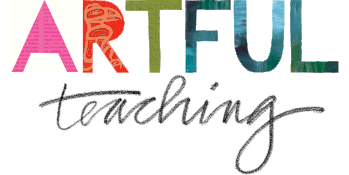
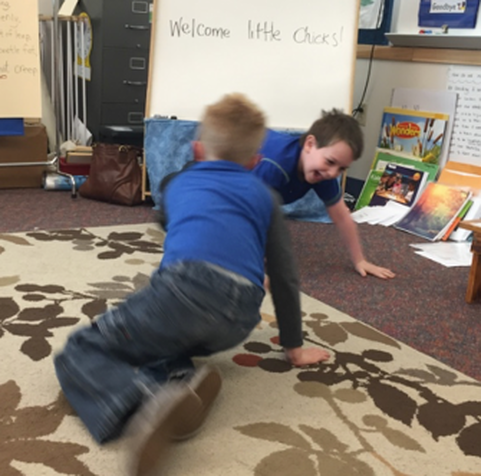
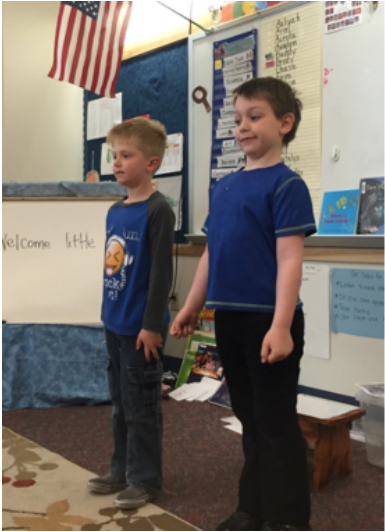

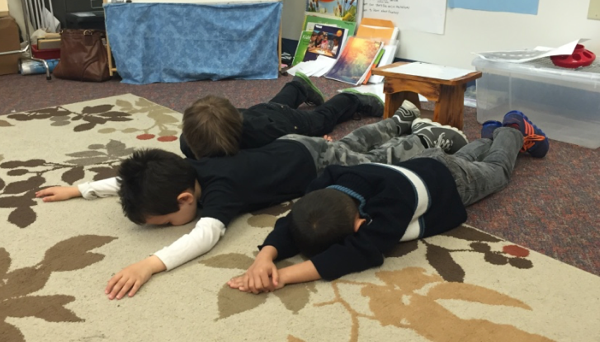
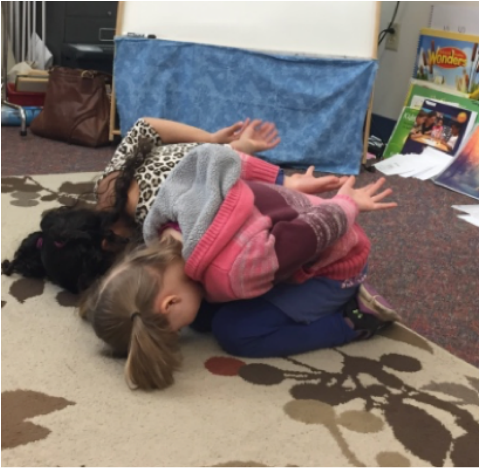
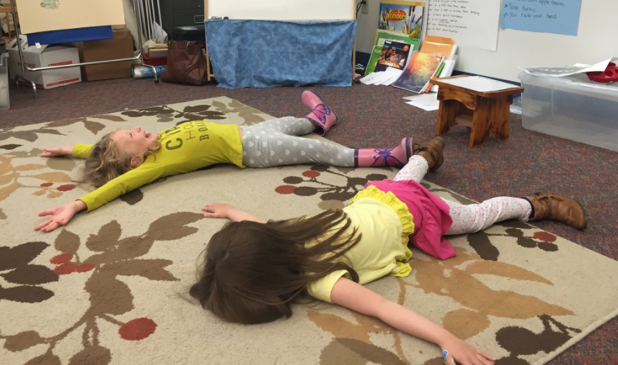
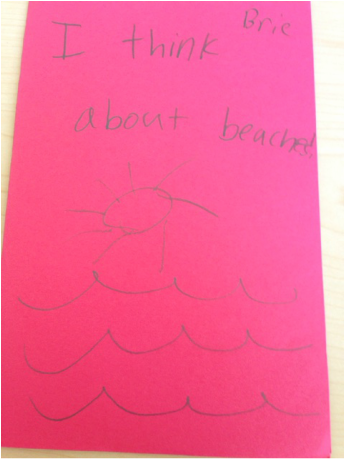
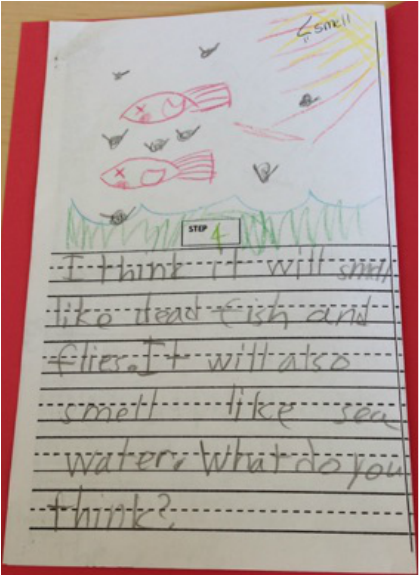
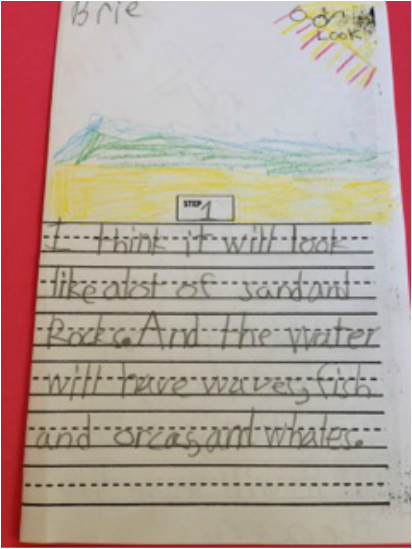
 RSS Feed
RSS Feed